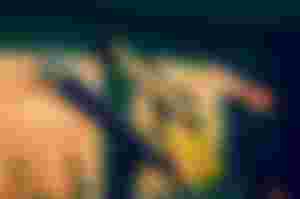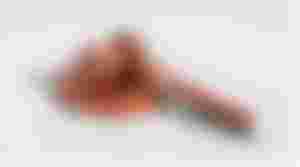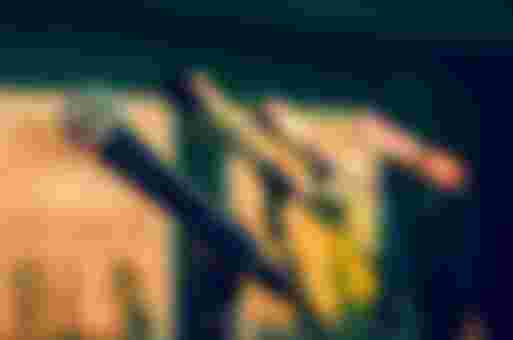What does copyright mean?
The purpose of copyright is to encourage intellectual creation and to guarantee the safety of creators and their works. Copyright is not only meant to protect creators and works, but also the operation of many other industries is ensured by copyright. It is protected by copyright
- public speaking,
- plays, musicals, dances and silent plays,
- Music with or without lyrics

- cinematographic and other audiovisual works
- works and designs created by drawing, painting, sculpture, engraving, printing or other similar means
- a photographic work is a work of applied art and its design
- the costume, the set and their design
- a database qualifying as a collection
The law not only protects works, but also extends their reworking if they are individual and original in nature (and if the original author has consented to this). The rules of reworking should also be used as a basis for the work being processed or translated if a new work is created as a result. So-called neighboring legal performances are also protected. Like the activities of musicians and actors, sound recordings, radio and TV shows.
On what basis are works entitled to legal protection?
Legal protection requires that the work be of an individual and original nature.
Individual character:
It exists when, under the circumstances of the work, several modes of expression are possible and from these the author individually selects a mode and creates the work on the basis of it. This may seem incomprehensible at first, but thousands of painters can paint millions of images so that no two of them are the same, while there are processes where it is not practical to deviate from the ideal solution (technical solutions).
Original character:
This simply means that the work was created and created by the author, not a copy of a pre-existing work. In all cases, copyright protection protects the casting of a given idea into an individual form.
Aesthetic criteria:
Copyright is independent of aesthetic and artistic value, but these greatly affect marketability.
When does copyright protection last?
There is no need for an official procedure for legal protection or for the work to be announced or registered. Legal protection is automatic from the moment the work is created.
But how can this be proven?
However, the author may request the National Office of Intellectual Property to register his work voluntarily, on the basis of which a certificate issued, although it does not in itself confer copyright protection, proves that the registered work existed with the content at that time.
What is a C sign good for? © ️

It is a common belief that a product is copyrighted if it bears the famous C mark. However, this is not the case. Copyright only informs the viewer of the work that the author reserves his rights and permission to use the mu must be sought. The use of the works requires the consent of the creator anyway, the C mark is only a warning, and it can provide additional information on who to turn to for use. How long does copyright protection for works last and when can it be used freely?
Copyright only protects a given work and author for a certain period of time, which means 70 years. This 70 years shall run from the first day after the death of the author (in the case of several co-authors, the last author). If the author is unknown, the first day of the year following the first publication of the work shall be considered. After that, the work becomes public domain, so anyone can use it without permission. An important clause is that if the memory of the deceased author is violated or the obligation of the original author to indicate the name is not observed, the heir or rights manager of the original author may take action against the infringing conduct.
How can your other’s work be used?
If 70 years have passed since the author's death, his work is considered to be in the public domain and can be used freely. Before that, however, either the author or (if 70 years have not elapsed since his possible death) his heir may grant permission to use the work.
How is licensing done?
In the context of individual licensing, the parties must conclude a usage contract. The contract must include:
- the exact designation of the work
- the precise definition of the method, time and territorial scope of use
- consideration for use
The other case is where the use is not authorized by the creator but by the collective rights manager. This is typical when it would be difficult for the user to contract. This is usually useful because of the uses or the large number of users: for example, for radio stations, because they play hundreds of songs a day.
In such cases, the level of remuneration is prescribed by statutory tariffs.
How can we use other’s work?
- we can only use the details
- purposeful, ie the receiving work can only be cited to a reasonable extent • the citation must be faithful to the original text
- indicate the source and the author indicated
- can only be cited in one's own work
In the case of works of fine, photographic and applied art, citation is not permitted, but a detail of a work may be published only with the permission of the author.
What rights does the author have?
Copyright confers property and personal rights on the author of a work. In most cases, the use of a work through property rights can only take place with the permission of the author. Use e.g. performing a play or uploading or playing a song on the Internet, etc. The author is mainly entitled to consideration and royalties for the uses. According to the law, it is necessary to seek the author's permission in connection with the following uses (these uses therefore embody the relevant rights of the author):
- reproduction
- dissemination
- the public presentation
- broadcasting to the public by radiation or otherwise
- retransmission to the public of a broadcast work through an organization other than the original
- recasting
- the exhibition
The rights of the person are as follows:
- the right to publish the work
- the author's right to indicate the name
- protection of the unity of the work.
When do I not need permission to use copyrighted works?
The exercise of the author's property rights may be hindered not only by the expiry of the term of protection, but also by cases of free use. The purpose of identifying these uses is to reconcile the interests of the creators and the user audience. This is done by setting exceptions where the general rights of copyright and related rights holders are limited by law in relation to a particular user (eg a disabled person, library, school) or for a specific use (eg education, research). It is important to note that free use can only take place if the specific work in connection with which the free use takes place is lawfully available to the person wishing to make free use. It cannot therefore be used freely from an illegal source.
Who do I have to ask permission to use a work whose author is unknown or I don't know where i can find?
There are cases where tracing the right holder does not yield results. If the author of the work is unknown or in an unknown place, the work is considered an orphan work.
How do you take action against someone who uses a copyrighted work without permission?
In the event that our copyright is infringed - for example, the work is used without permission and royalty payment - there are a number of ways for the author to obtain appropriate redress.
Out-of-court tools
When taking action against the offender, it is worthwhile to use out-of-court means, which provide an opportunity to remedy the damage in a shorter period of time. One such option could be to send a letter of formal notice prior to the court proceedings, which may include an offer of cooperation or a request to stop the use in question. It is also possible for the infringer to be offered a contract of use by the author.
Another option is the so-called. recourse to mediation. Mediation is a peaceful settlement of the ongoing dispute. In this procedure, a neutral third party, the mediator, facilitates the bonding of the unity. The advantage of mediation is that it is lower than in court and provides a faster and more efficient way to resolve a dispute.
Civil rights

An author whose copyrighted works are used without permission (and the use does not fall within the scope of free use) may require the infringer to obtain a judicial finding that the infringement has occurred, demand that the infringement or acts directly threatening it be stopped and that the infringer be banned. further infringement, demand that the infringer declare the infringement or otherwise in an appropriate manner and, if necessary, provide adequate publicity on the part and at the expense of the infringer, require the infringer to provide information on the production or distribution of the infringing goods or services , the participants in its performance, the business relations established for the infringing use, may demand the refund of the proceeds of the infringement, may demand the termination of the infringing situation, the restoration of the state prior to the infringement, and the exclusive or primarily legal seizure, recall, withdrawal or destruction of tools and materials used for understanding and
Special device notification-removal procedure against Internet infringement
If copyright is infringed by an online communication, it is recommended that you contact the ISP concerned. Under the notification-removal procedure, access to infringing content can be terminated at short notice.
The main elements of the procedure are as follows:
- when the violation is detected, the right holder sends a full or private document to the hosting provider specifying the infringing information to which the removal request relates, the service provider is obliged to terminate access to the infringing content within 12 hours notifying the content provider, who may object in this regard (that the content you posted was not infringing):
- on the basis of the objection, the hosting provider must provide for the reinstatement of the content: the rightholder may initiate civil proceedings or file a criminal complaint within 10 working days of receiving the notice of the reinstatement.
Closing thoughts
I consider it important to describe that I wrote the article based on the laws in force in Hungary. Although I did not describe the specific laws in the article, the content may still contain information that may vary from country to country.
But I think that basically the same rules apply to everyone on this subject, regardless of where you live, at most, the way claims are handled, or the action against infringements can be different.
images’ source: pixabay


